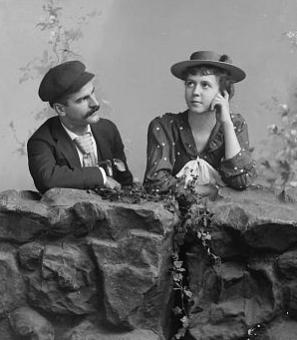The Washington Capitals Could Have Been the Washington Pandas
“Now this is no easy thing — naming a sports team,” Washington Post reporter Bob Addie wrote in the spring of 1973.[1] Naming anything can have complications: the right name is memorable, hopefully catchy, and looks good on jerseys, while a bad name becomes a joke — or worse, an embarrassment. That was why there was such surprise that Abe Pollin, who had recently become the owner of the new — and still unnamed — NHL hockey team that was coming to the D.C. area was “toying with the idea of having a contest to name the baby.”[2] What owner could be so comfortable with leaving such a decision up to the fans?
The reactions of Addie and other sportswriters to the decision ranged from mild amusement to outright derision. A naming contest for a professional sports team? Where the winning name was decided by vote count? It sounded like a recipe for disaster — given that there was no limit to how many entries an individual could submit, someone could try to manipulate the contest. Or some prankster might suggest a name as a joke (“trolling,” in today’s lingo), and enough people might find it funny enough that it could end up as the team name. The list of reasons not to do it seemed far longer than the list of reasons why it was a good idea.
Despite the potential pitfalls, the contest went on, becoming a surprising hit when voting formally opened on January 2, 1974. The public response was more than unexpectedly high — it was a downright torrent. Within two weeks, there had been over 11,000 individual submissions that suggested over 700 names.[3] One especially devoted entrant sent in 102 different postcards with 102 different ideas.[4] Area newspapers scrambled to keep up with contest progress, eagerly reporting on what names were currently at the top, and which were getting dethroned. Abe Pollin’s idea — that the best way to get people excited for the new team was to make them feel like they had a share in them — was a runaway winner.
By this point, of course, it wasn’t news to Washington that Pollin was trying to bring a hockey team to the area. The public had been following his progress in luring an NHL expansion franchise for several years[5] — a pursuit that connected back to his first love: basketball. Pollin was already the owner of NBA’s Baltimore Bullets, and he’d been wanting to build a new arena for the team in the D.C. area. In order to make such a project economically viable, he needed to make sure that the building would have plenty of events outside of the basketball schedule. While it might have worked to build an arena that doubled as a convention center, Pollin decided on bringing in a hockey team instead. With 40+ home games per year, the sport could help his bottom line.
His original plan was to build a home for his teams in Columbia, Maryland, near the intersection of I-95 and Maryland State Route 175, though he soon began considering other sites, including Largo, Maryland, and D.C.’s Mount Vernon Square neighborhood, where Congress intended to build the Dwight D. Eisenhower Memorial Bicentennial Civic Center.[6] As Mark Asher — another Washington Post sportswriter — wrote in early 1972, “Abe controls the cards,”[7] pointing out that Pollin held territorial rights that prevented another pro basketball team within 75 miles of Baltimore, and could block another hockey team as well if he secured NHL rights.
In a sort of chicken-or-the-egg process, Pollin continued pushing for a team while also scouting for a location to house one, both of which depended on the other. He didn’t want an arena if his application for a hockey team was denied, but he had to have a place for a team to play — or begin building one — in order to be approved. Pollin was granted a franchise in 1972,[8]with the knowledge that he would have to have an arena ready in time for the 1974-1975 season.
In the end, none of these locations saw construction vehicles.[9] Pollin determined his team would play in Landover, Maryland, in a yet-to-be-built arena called the Capital Centre. The Capital Centre would not only be outside the city limits of Washington, but it would also be outside the limits of the new Metrorail system. Jerry Sachs, former general manager of the Bullets, pointed out that “the land was actually left over from the construction of the Beltway […] it was landlocked, it had no access, and Metro was not even in the planning stages for anything in that area.”[10] In addition to the construction of the Capital Centre, there were also complications due to the fact that roads had to be built in order to allow fans to get there.[11]
Now that he had the arena, Pollin returned to the vexing issue of naming the team. Team names generally follow patterns, Bob Addie told readers in 1973.[12] He also pointed out that sports headlines were easier to write when names were already short (like the New York Jets) or could be shortened (like the New York Knicks, short for the Knickerbockers). “Some association with the leading commercial product of a city”[13] might be a good idea, like the Pittsburgh Steelers or the Milwaukee Brewers. Or perhaps an animal known for strength might do well, like lions, tigers, or bears. He pointed out that Native American names were also popular, though he himself was a fan of name puns, suggesting the Keys (since the team was then still to be based out of Largo), and even going so far as to say that the team could be named the Gates, a nod to the recently-broken Watergate scandal.
The contest was open to anyone in the area,[14] except those who worked at the Capital Centre, as well as their families.[15] Entrants were asked to send their submissions on postcards, one person and one idea per card, but were allowed to enter more than once, which is how the person who sent in 102 cards was able to do so. The prize was nothing to be sneezed at: the winner would be sent two season tickets allowing them into all NHL games at the Capital Centre during the 1974-1975 season. If more than one person sent in the winning name, then their names would be put in a hat, and a drawing would take place to determine who received the tickets.
The Washington Post writers, especially, had quite the amusing time keeping track of the good, the bad, and the groan-inducing entries.[16] Suggestions such as the Puck-Ups, the Slapsticks, and the Caputs reflected a widely shared opinion that the new team would crash-and-burn on arrival. (In a decidedly gender-biased suggestion, one entrant wrote in that his choice, “the Girls,” reflected how badly he expected the new team to play[17]). Those who enjoyed puns sent names such as the Capital Gains, the Belters, the Goal Diggers, the APEs (Abe Pollin Enterprises), the Tri-Stars (for D.C., Maryland, and Virginia), and the Pollin Bears. Others went in a more forceful direction, recommending the Stompers, the Cutthroats, the Killers, the Werewolves, or the Punishers. Still others proposed the Largo Lizards and the Beltway Bandits.
The top three choices, however, after the first week or so, stayed fairly consistent. In first place was the Comets; the Pandas — a nod to recent “panda-monium” (a term coined by First Lady Pat Nixon) — were a strong second, especially among younger fans (though not with Post sportswriter George Minot, Jr., who called them “fat lay-abouts”[18] and said that “considering their country of origin, their politics are suspect”[19]); there was a tie for third between the Eagles (Minot objected to sharing a name with “an also-ran football team from Philadelphia”[20]) and the Metros (“a misnomer,” he wrote; “there’s no subway line to Largo yet”[21]).
For those following the contest’s progress, the highly anticipated announcement of the winner came on January 22, 1974…and the result was a shock to most. None of the frontrunners was chosen: instead, the name Abe Pollin pulled out of an envelope while standing rink-side in the new Capital Centre with his new players and a handful of journalists was the Washington Capitals. According to the Post, after he read the announcement, “Pollin had a smiling face, most others had fallen.”[22]
It was a puzzling choice. For one thing, the rules of the contest had stated that the choice was to be made based on the most popular contest submissions. For another, the Washington Capitols had been the name given to not one, but two, local pro basketball teams,[23] which had called D.C. home in the 1950s.[24] Neither had been particularly successful, and both had quickly gone defunct. Perhaps most perplexing of all, a few hours before Pollin’s announcement, organizers of an effort to bring a pro soccer team to Washington, which was to play in the World Football League, declared that their team would be called the Washington Capitals. Sports fans were confused, and so were the hockey players.[25]
When asked about his decision, Abe Pollin said he had been keeping tabs on the names that had been doing the best in the contest, and noting which he liked best himself. Even though the Washington Capitals was not the most popular choice among fans, he had liked it enough to earmark it on his own list.[26] The night before the announcement, he and his wife Irene had been going through the results, and, at 11:30 p.m., they decided that the Comets sounded too much like the cleaning brand, and neither liked the Pandas. The Philadelphia Eagles were at a low point, making the Pollins wary of letting their hockey team share the name, while choosing the Metros would be too close to the New York Mets, short for the Metropolitans. Moreover, the Pollins both thought the Capitals had a good, solid ring to it.
88 people sent “Capitals” in as their suggestion for the naming contest (as opposed to the 250 who liked the Comets), so all of their names were pooled together, and one drawn for the season tickets. A Mrs. Stolarick of Alexandria won the tickets, and the 87 runners-up got autographed hockey sticks.[27] But even this caused controversy, as — by Stolarick’s own admission — “Capitals” was not the name she had submitted. The Washington Post quoted her as saying “Washington Caps was what I had in mind. It’s better than Capitals. It’s easier to put on the jerseys.”[28] But Abe Pollin vehemently disliked the name “Caps,” saying he found “Capitals” to be more appropriate for the area, and because it tied in so neatly to the Capital Centre, the team’s new home.[29]
The reactions from around Washington did not inspire confidence. One letter sent to The Washington Post asked why there’d been a contest at all, if a recycled name was the best result, and “why solicit for opinion when ‘the most popular name submitted’ — Comets — is overruled by a ‘unanimous’ vote of Pollin and his wife?”[30] Many others asked why Mrs. Stolarick had been put into the drawing if she had suggested a different name, one which Abe Pollin, himself, said he disliked.
Nevertheless, despite the PR missteps and the somewhat odd process, the Washington Capitals moniker was here to stay. After 40+ seasons, the name has become firmly attached to D.C.’s hockey team — so much so that few people now remember the basketball teams with the similar name. That said, Mrs. Stolarick might find it poetic justice that the name most Washingtonians use when talking about Ovechkin, Oshie, Holtby, or Bäckström…is the Caps.
Footnotes
- ^ Bob Addie, “A Name for the Baby,” Washington Post-Times Herald, May 2, 1973.
- ^ Ibid.
- ^ George Minot Jr., “Name-Coiners Tart, Puckish,” Washington Post, January 16, 1974.
- ^ Ibid.
- ^ William Gildea, ”Favorable Poll Surprised Pollin Before Bid to NHL,” Washington Post-Times Herald, June 18, 1972.
- ^ “Which Site for the Sports Arena?,” Washington Post-Times Herald, June 17, 1972.
- ^ Mark Asher, “Pollin Bids for NHL,” Washington Post-Times Herald, March 14, 1972.
- ^ Alex Prewitt, “How the Washington Capitals turned in – and recovered from – the worst NHL season ever,” Sports Illustrated, January 11, 2017.
- ^ Donald P. Baker, “”D.C. Center Approved by Senate,” Washington Post-Times Herald, September 20, 1972.
- ^ Neal Augenstein, “Flashback: Before the Capitals, and the birth of the Cap Centre,” WTOP, April 26, 2017.
- ^ Ibid
- ^ Addie, “A Name.”
- ^ Ibid
- ^ “Centre Opens Name Contest,” Washington Post, January 2, 1974.
- ^ Ibid.
- ^ Minot, “Name-Coiners.”
- ^ Ibid.
- ^ Ibid.
- ^ Ibid.
- ^ Ibid.
- ^ Ibid.
- ^ George Minot Jr., “”Pollin’s NHL Team to Play as ‘Capitals,’” Washington Post, January 22, 1974.
- ^ Red Auerbach, an NBA Hall of Famer, coached the Capitols from 1946 to 1949. The team was founded in 1946 and was based out of Uline Arena; it became a charter NBA team in 1949, but was shuttered in early 1951. A very brief comeback later that year was a failure, and the team folded a second time in 1952.
- ^ Ibid.
- ^ George Minot Jr., “WFL Name-Droppers Sometimes Miss Point,” Washington Post, February 14, 1974.
- ^ Minot, “Pollin’s NHL Team.”
- ^ Ibid.
- ^ Ibid.
- ^ Ibid.
- ^ William S. Dickson, “Letters to the Editor: Washington Capitals,” Washington Post, January 31, 1974.


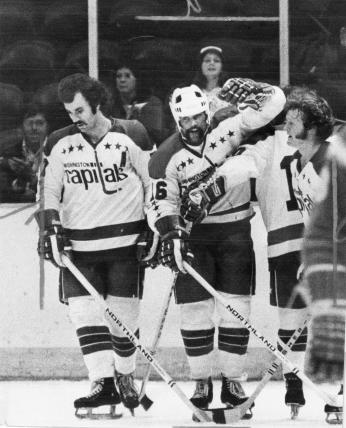
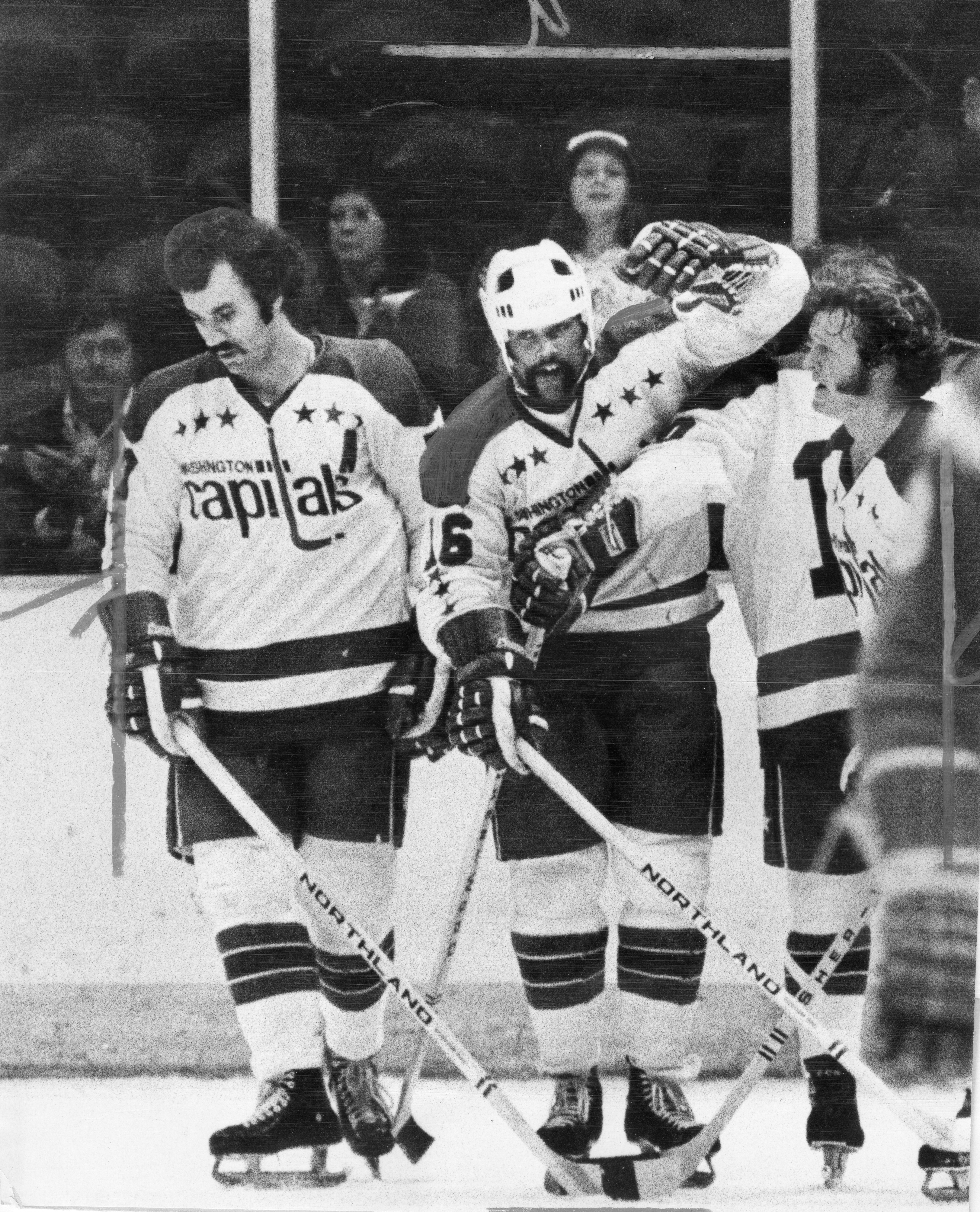


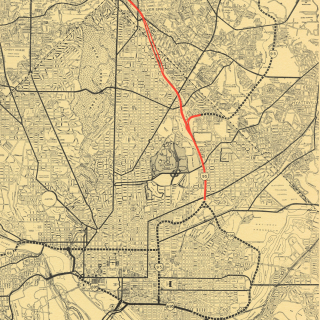
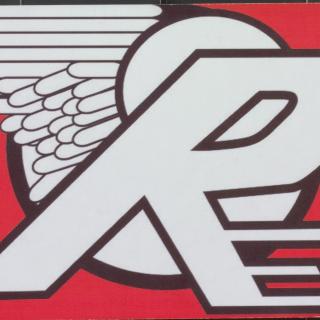
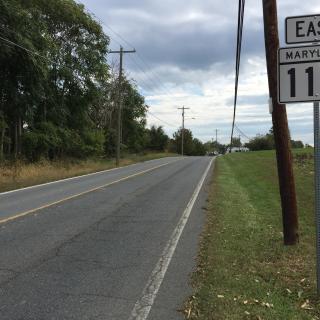
![Sketch of the mythical fuan by Pearson Scott Foresman. [Source: Wikipedia]](/sites/default/files/styles/crop_320x320/public/2023-10/Goatman_Wikipedia_Faun_2_%28PSF%29.png?h=64a074ff&itok=C9Qh-PE1)











